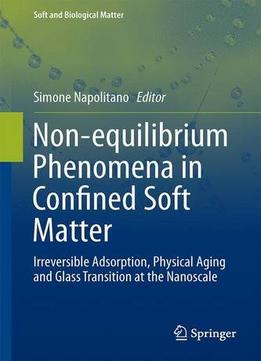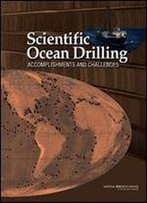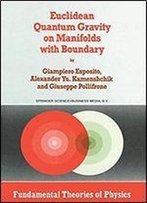
Non-Equilibrium Phenomena In Confined Soft Matter
by Simone Napolitano /
2015 / English / PDF
12.3 MB Download
by Simone Napolitano (Editor) This book presents cutting-edge experimental and computational results and provides comprehensive coverage on the impact of non-equilibrium structure and dynamics on the properties of soft matter confined to the nanoscale. The book is organized into three main sections: · Equilibration and physical aging: by treating non-equilibrium phenomena with the formal methodology of statistical physics in bulk, the analysis of the kinetics of equilibration sheds new light on the physical origin of the non-equilibrium character of thin polymer films. Both the impact of sample preparation and that of interfacial interactions are analyzed using a large set of experiments. A historical overview of the investigation of the non-equilibrium character of thin polymer films is also presented. Furthermore, the discussion focuses on how interfaces and geometrical confinement perturb the pathways and kinetics of equilibrations of soft glasses (a process of tremendous technological interest). · Irreversible adsorption: the formation of stable adsorbed layers occurs at timescales much larger than the time necessary to equilibrate soft matter in bulk. The question is posed as to whether this process could be considered as the driving force of equilibration. In this section, the investigation of the physics of irreversible chain adsorption is accompanied by a detailed analysis of the molecular dynamics, structure, morphology, and crystallization of adsorbed layers. · Glass transition and material properties: the discussion covers a broad range of non-equilibrium phenomena affecting different families of soft materials – polymers, low molecular weight glass formers, and liquid crystals. In these systems, geometrical confinement induces the formation of non-equilibrium phases, otherwise not achievable via processing of bulk samples. The examples illustrated in this section show how non-equilibrium phenomena can be exploited as innovative processing parameters to fabricate novel nanomaterials with improved performance. Finally, the differences between experiments performed under equilibrium conditions and temperature scans from equilibrium to non-equilibrium states at the nanoscale are discussed. graduated in Materials Science from the University of Pisa in 2005 and two years after he received a PhD in Polymer Physics from KULeuven. After an appointment as postdoctoral researcher at the Research Foundation Flanders (FWO), in 2011 he joined the Université Libre de Bruxelles, where he holds a faculty position and leads the Laboratory of Polymers and Soft Matter Dynamics. His current research focuses on the molecular origin of the glass transition and the correlation between structure and dynamics in polymers and small molecules under nanoscopic confinement. 60 illus., 71 in colour











